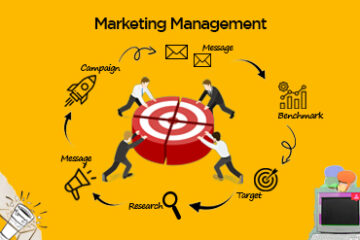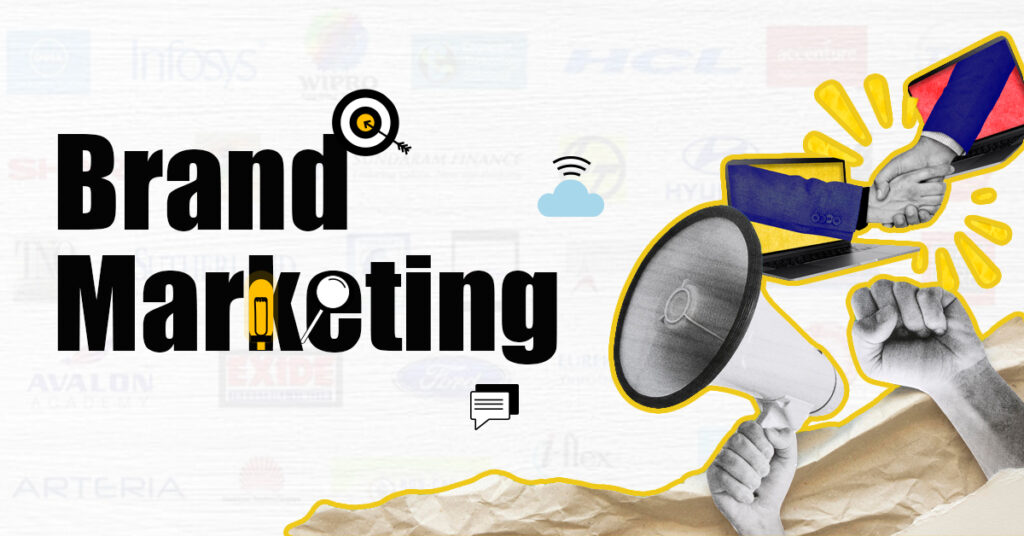
Brand marketing is the art and science of building a strong, positive perception of a company, its products, or its services in the customer’s mind. It encompasses everything from visual identity to customer experience and plays a crucial role in distinguishing your business in a competitive marketplace. This comprehensive guide explores the strategies, techniques, and tools that can help your brand stand out, engage your audience, and drive growth.
Table of Contents
What is Brand Marketing?
Brand marketing is more than just a logo or tagline; it’s the entire experience your customers have with your company. It involves crafting a cohesive and compelling narrative that resonates with your target audience, builds trust, and fosters loyalty. A well-executed brand marketing strategy can differentiate you from competitors, enhance customer loyalty, and ultimately drive business success.
Key Components of Brand Marketing
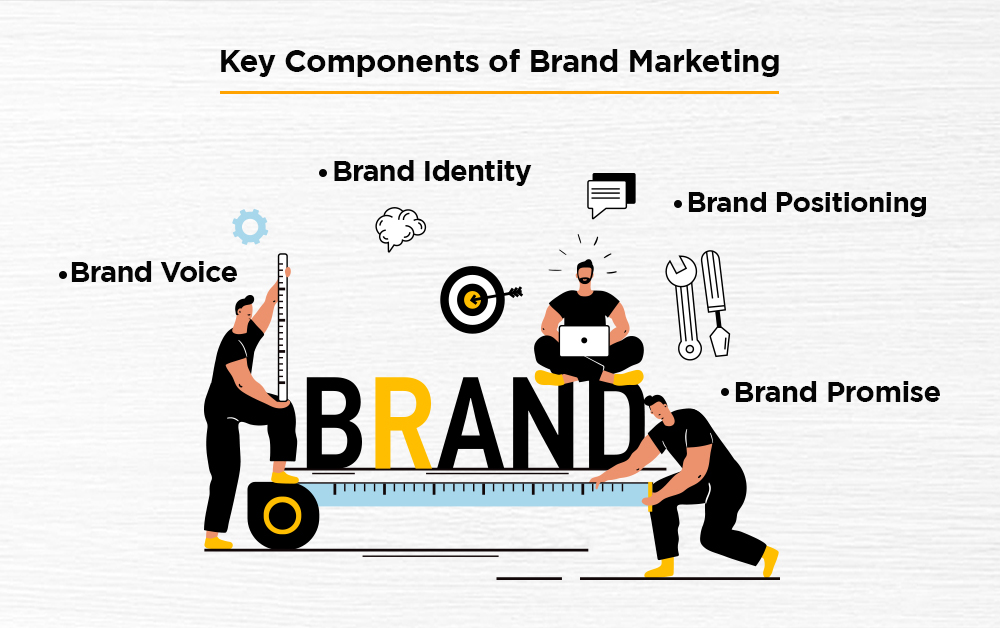
- Brand Identity: Visual elements like logos, colors, and typography that represent your brand and create a memorable impression.
- Brand Positioning: How you differentiate yourself from competitors and where you fit in the market.
- Brand Voice: The tone and style of your communication, reflect your brand’s personality.
- Brand Promise: The value you commit to delivering to your customers, ensuring consistency in their experience.
Developing a Brand Marketing Strategy
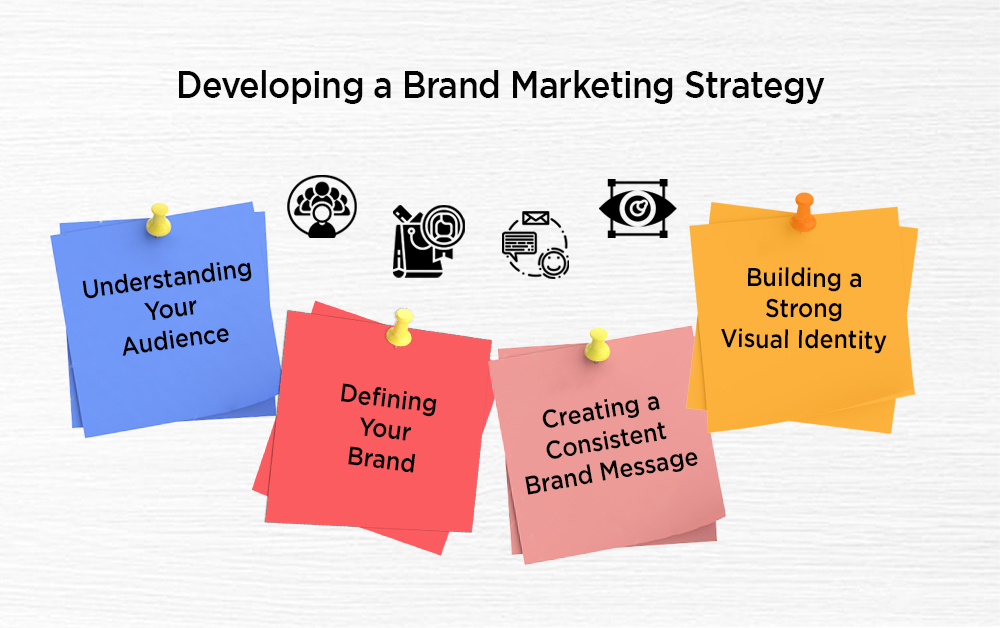
A robust brand marketing strategy is the foundation for building a strong brand. Here’s how to develop one:
1. Understanding Your Audience
Knowing who your customers are is the first step in creating a successful brand marketing strategy. Use market research, surveys, and data analytics to gather insights about their needs, preferences, and behaviors. This understanding will guide your branding decisions and ensure that your message resonates with your target audience.
- Market Research: Conduct surveys, focus groups, and interviews to gather qualitative data.
- Customer Personas: Create detailed profiles of your ideal customers, including demographics, psychographics, and buying behaviors.
- Data Analytics: Use tools like Google Analytics and social media insights to analyze customer behavior and preferences.
2. Defining Your Brand
Craft a clear and compelling brand story. Define your mission, vision, and values. Ensure that these elements resonate with your target audience and reflect what makes your brand unique.
- Mission Statement: What is your brand’s purpose? What do you aim to achieve?
- Vision Statement: Where do you see your brand in the future? What impact do you want to have?
- Core Values: What principles guide your brand’s actions and decisions?
3. Creating a Consistent Brand Message
Consistency is key to effective brand marketing. Develop a brand messaging framework that outlines how your brand communicates across different channels and touchpoints. This includes your website, social media, email campaigns, and customer service interactions.
- Key Messages: Identify the main points you want to communicate about your brand.
- Brand Tone: Determine the tone of voice that reflects your brand’s personality (e.g., friendly, professional, humorous).
- Storytelling: Use storytelling techniques to create an emotional connection with your audience.
4. Building a Strong Visual Identity
Invest in professional design to create a visual identity that reflects your brand’s personality and values. This includes your logo, color palette, typography, and imagery.
- Logo: A unique and recognizable logo is crucial for brand identity.
- Color Palette: Choose colors that evoke the right emotions and align with your brand’s personality.
- Typography: Select fonts that complement your brand’s voice and are easy to read.
- Imagery: Use high-quality images and graphics that reinforce your brand message.
Effective Brand Marketing Techniques
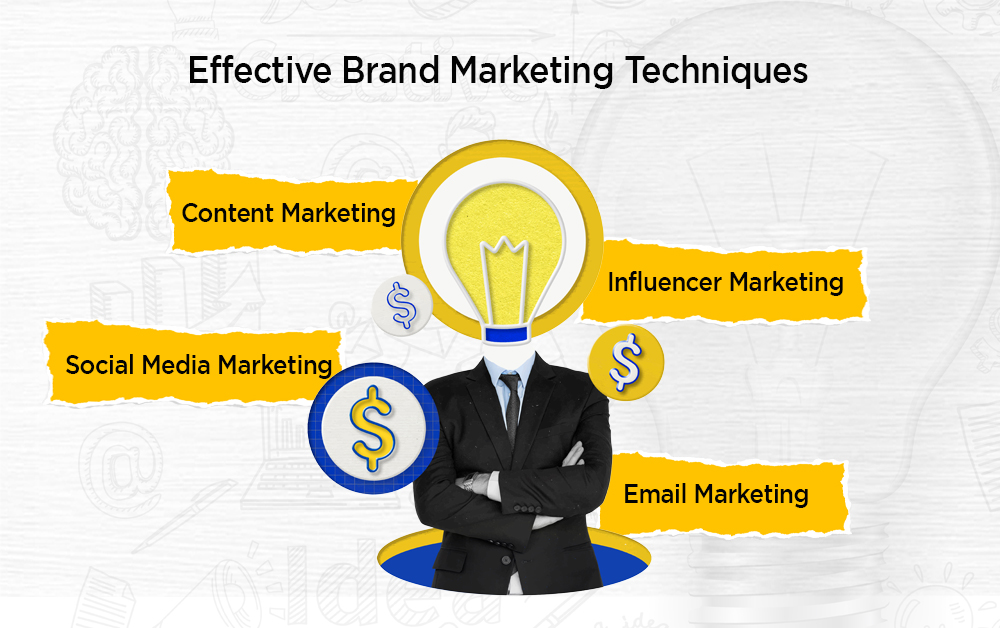
Implementing the right techniques can significantly enhance your brand marketing efforts. Here are some of the most effective strategies:
1. Content Marketing
Content marketing involves creating and sharing valuable content to attract and engage your target audience. This includes blog posts, videos, infographics, eBooks, and more. The goal is to provide useful information that builds trust and positions your brand as an authority in your industry.
- Blogging: Write informative and engaging blog posts that address your audience’s pain points and interests.
- Video Content: Create videos that tell your brand story, demonstrate your products, or provide valuable tips.
- Infographics: Use infographics to present complex information in an easy-to-understand visual format.
- eBooks and Whitepapers: Offer in-depth guides and reports to showcase your expertise and generate leads.
2. Social Media Marketing
Social media platforms offer powerful tools for brand marketing. Use these platforms to share your content, engage with your audience, and build a community around your brand. Tailor your approach to each platform to maximize engagement.
- Platform Selection: Choose the right platforms for your audience (e.g., LinkedIn for B2B, Instagram for B2C).
- Content Strategy: Plan a mix of content types (e.g., posts, stories, live videos) to keep your audience engaged.
- Community Building: Engage with your followers by responding to comments, asking questions, and hosting events.
- Advertising: Use social media ads to reach a broader audience and drive traffic to your website.
3. Influencer Marketing
Partnering with influencers can help you reach a broader audience and build credibility. Choose influencers who align with your brand values and have a strong connection with your target audience.
- Identifying Influencers: Look for influencers in your industry with a genuine connection to your brand.
- Collaboration: Work with influencers to create authentic content that highlights your products or services.
- Campaign Goals: Define clear objectives for your influencer campaigns, such as brand awareness or lead generation.
- Measuring ROI: Track the performance of your influencer partnerships using metrics like engagement, reach, and conversions.
4. Email Marketing
Email marketing is an effective way to nurture relationships with your customers. Send personalized, relevant content that adds value and keeps your audience engaged with your brand.
- List Building: Grow your email list with opt-in forms, lead magnets, and promotions.
- Segmentation: Segment your audience based on demographics, behavior, and preferences to deliver targeted content.
- Automation: Use email automation tools to send timely and relevant messages, such as welcome emails and drip campaigns.
- Analytics: Monitor key metrics like open rates, click-through rates, and conversions to optimize your email marketing strategy.
Measuring Brand Marketing Success
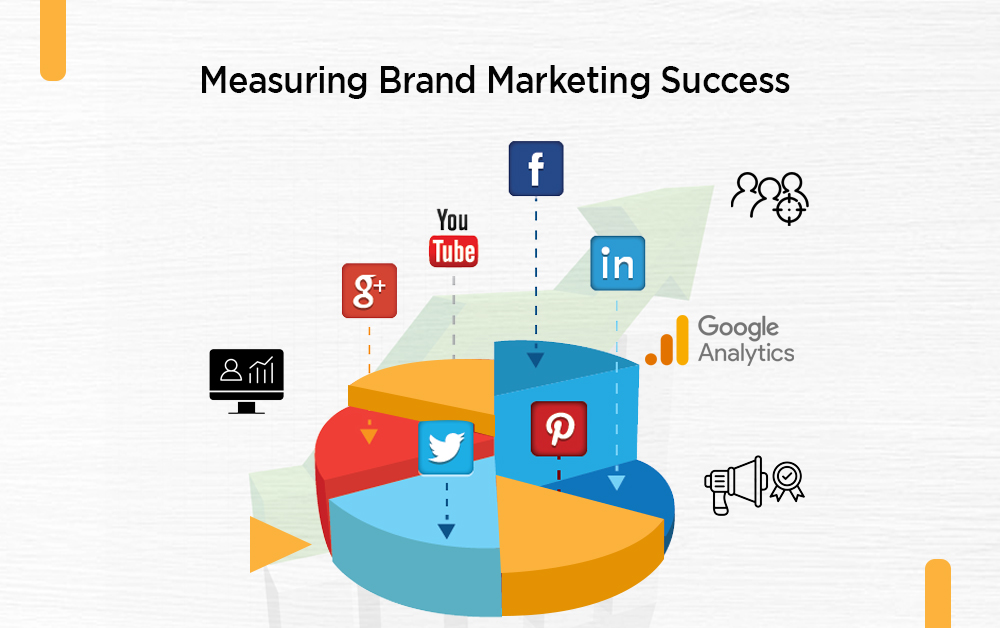
To ensure your brand marketing efforts are effective, it’s important to track and analyze key metrics. These may include brand awareness, customer engagement, website traffic, and conversion rates. Use tools like Google Analytics, social media analytics, and customer feedback to gather data and make informed decisions.
- Brand Awareness: Measure brand recognition and recall through surveys and social listening.
- Customer Engagement: Track interactions with your content, such as likes, shares, comments, and time spent on your website.
- Website Traffic: Use Google Analytics to monitor traffic sources, page views, and user behavior on your site.
- Conversion Rates: Analyze how well your brand marketing efforts are driving conversions, such as sign-ups, purchases, or inquiries.
Tools for Measuring Success
- Google Analytics: Provides insights into website traffic and user behavior.
- Social Media Analytics: Platforms like Facebook Insights and Twitter Analytics offer data on engagement and reach.
- Email Marketing Software: Tools like Mailchimp and HubSpot track email performance metrics.
- Customer Feedback: Surveys and reviews help gauge customer satisfaction and brand perception.
- Marketing Management: Marketing management measures brand success through various qualitative and quantitative metrics that reflect the brand’s performance in the market and its resonance with customers.
Conclusion
Brand marketing is a continuous process that requires strategic planning, consistent execution, and regular evaluation. By understanding your audience, defining your brand, and using effective marketing techniques, you can build a strong brand that resonates with your customers and drives long-term success.
Investing in brand marketing not only enhances your company’s reputation but also creates a loyal customer base that advocates for your brand. Keep experimenting, stay adaptable, and always focus on delivering value to your audience.

